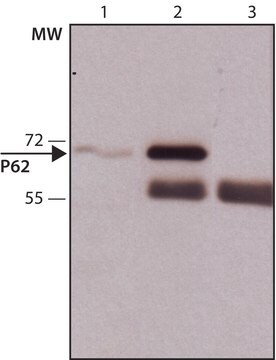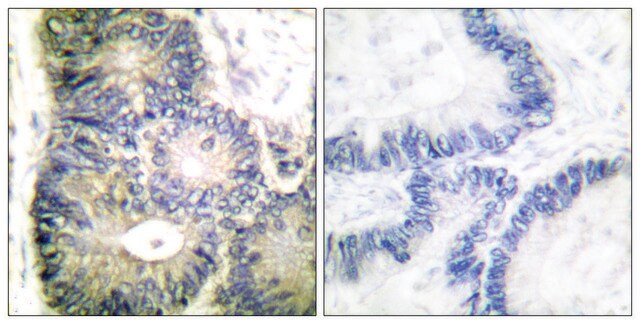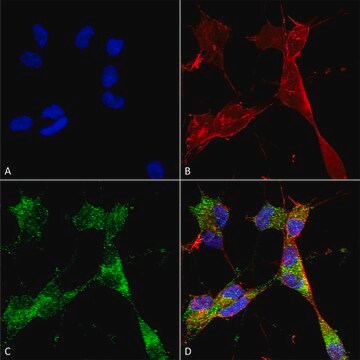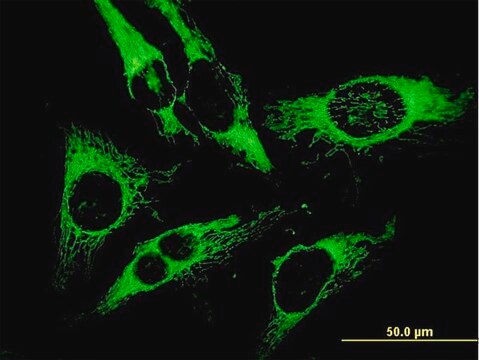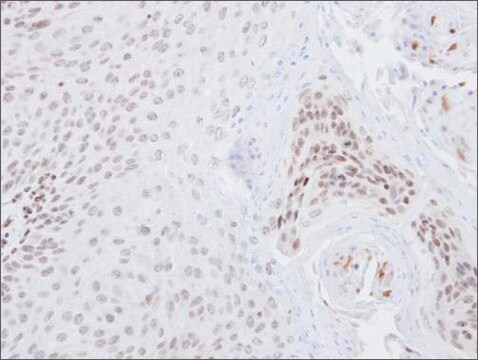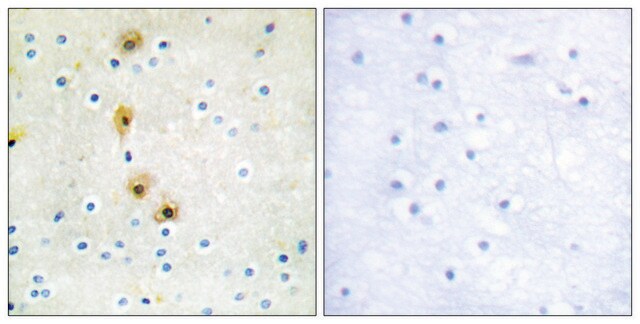MABC186-I
Anti-phospho-p62 (Ser403) Antibody, clone 4F6
clone 4F6, from rat
Synonym(e):
Ubiquitin-binding protein p62, p62, EBI3-associated protein of 60 kDa, EBIAP, p60, Phosphotyrosine-independent ligand for the Lck SH2 domain of 62 kDa
About This Item
Empfohlene Produkte
Biologische Quelle
rat
Qualitätsniveau
Antikörperform
purified immunoglobulin
Antikörper-Produkttyp
primary antibodies
Klon
4F6, monoclonal
Speziesreaktivität
human, mouse
Methode(n)
immunohistochemistry: suitable
western blot: suitable
Isotyp
IgG2aκ
NCBI-Hinterlegungsnummer
UniProt-Hinterlegungsnummer
Versandbedingung
ambient
Posttranslationale Modifikation Target
phosphorylation (pSer403)
Angaben zum Gen
human ... SQSTM1(8878)
Allgemeine Beschreibung
Spezifität
Immunogen
Anwendung
Immunohistochemistry Analysis: A representative lot detected p62/SQSTM1 (Ser403) in a Immunohistochemistry application. (Matsumoto, G., et. al. (2011). Mol Cell. 44(2):279-289).
Qualität
Western Blotting Analysis: 0.5 µg/mL of this antibody detected p62/SQSTM1 (Ser403) in Neuro2a cells in which GFP fused human p62 (G-p62) was stably transfected and treated with MG132 vs. an untreated sample.
Zielbeschreibung
Physikalische Form
Sonstige Hinweise
Sie haben nicht das passende Produkt gefunden?
Probieren Sie unser Produkt-Auswahlhilfe. aus.
Lagerklassenschlüssel
12 - Non Combustible Liquids
WGK
WGK 1
Flammpunkt (°F)
Not applicable
Flammpunkt (°C)
Not applicable
Analysenzertifikate (COA)
Suchen Sie nach Analysenzertifikate (COA), indem Sie die Lot-/Chargennummer des Produkts eingeben. Lot- und Chargennummern sind auf dem Produktetikett hinter den Wörtern ‘Lot’ oder ‘Batch’ (Lot oder Charge) zu finden.
Besitzen Sie dieses Produkt bereits?
In der Dokumentenbibliothek finden Sie die Dokumentation zu den Produkten, die Sie kürzlich erworben haben.
Unser Team von Wissenschaftlern verfügt über Erfahrung in allen Forschungsbereichen einschließlich Life Science, Materialwissenschaften, chemischer Synthese, Chromatographie, Analytik und vielen mehr..
Setzen Sie sich mit dem technischen Dienst in Verbindung.